Adaptive immune features of natural killer cells
- PMID: 19136945
- PMCID: PMC2674434
- DOI: 10.1038/nature07665
Adaptive immune features of natural killer cells
Erratum in
- Nature. 2009 Feb 26;457(7233):1168
Abstract
In an adaptive immune response, naive T cells proliferate during infection and generate long-lived memory cells that undergo secondary expansion after a repeat encounter with the same pathogen. Although natural killer (NK) cells have traditionally been classified as cells of the innate immune system, they share many similarities with cytotoxic T lymphocytes. We use a mouse model of cytomegalovirus infection to show that, like T cells, NK cells bearing the virus-specific Ly49H receptor proliferate 100-fold in the spleen and 1,000-fold in the liver after infection. After a contraction phase, Ly49H-positive NK cells reside in lymphoid and non-lymphoid organs for several months. These self-renewing 'memory' NK cells rapidly degranulate and produce cytokines on reactivation. Adoptive transfer of these NK cells into naive animals followed by viral challenge results in a robust secondary expansion and protective immunity. These findings reveal properties of NK cells that were previously attributed only to cells of the adaptive immune system.
Figures
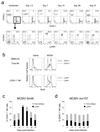
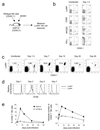
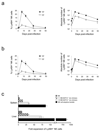
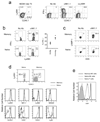
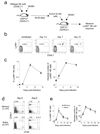

Comment in
-
Immunology: Natural killer cells remember.Nature. 2009 Jan 29;457(7229):544-5. doi: 10.1038/457544a. Nature. 2009. PMID: 19177118 No abstract available.
-
A "memorable" NK cell discovery.Cell Res. 2009 Mar;19(3):277-8. doi: 10.1038/cr.2009.23. Cell Res. 2009. PMID: 19252510 No abstract available.
Similar articles
-
Tracking Effector and Memory NK Cells During MCMV Infection.Methods Mol Biol. 2016;1441:1-12. doi: 10.1007/978-1-4939-3684-7_1. Methods Mol Biol. 2016. PMID: 27177652
-
Cytomegalovirus generates long-lived antigen-specific NK cells with diminished bystander activation to heterologous infection.J Exp Med. 2014 Dec 15;211(13):2669-80. doi: 10.1084/jem.20141172. Epub 2014 Nov 24. J Exp Med. 2014. PMID: 25422494 Free PMC article.
-
Comparing the kinetics of NK cells, CD4, and CD8 T cells in murine cytomegalovirus infection.J Immunol. 2011 Aug 1;187(3):1385-92. doi: 10.4049/jimmunol.1100416. Epub 2011 Jun 22. J Immunol. 2011. PMID: 21697462 Free PMC article.
-
Immune memory redefined: characterizing the longevity of natural killer cells.Immunol Rev. 2010 Jul;236:83-94. doi: 10.1111/j.1600-065X.2010.00900.x. Immunol Rev. 2010. PMID: 20636810 Free PMC article. Review.
-
Molecular Programming of Immunological Memory in Natural Killer Cells.Adv Exp Med Biol. 2015;850:81-91. doi: 10.1007/978-3-319-15774-0_7. Adv Exp Med Biol. 2015. PMID: 26324348 Review.
Cited by
-
Expansions of adaptive-like NK cells with a tissue-resident phenotype in human lung and blood.Proc Natl Acad Sci U S A. 2021 Mar 16;118(11):e2016580118. doi: 10.1073/pnas.2016580118. Proc Natl Acad Sci U S A. 2021. PMID: 33836578 Free PMC article.
-
Trained immunity and host-pathogen interactions.Cell Microbiol. 2020 Dec;22(12):e13261. doi: 10.1111/cmi.13261. Epub 2020 Sep 17. Cell Microbiol. 2020. PMID: 32902895 Free PMC article. Review.
-
NK Cell Memory to Cytomegalovirus: Implications for Vaccine Development.Vaccines (Basel). 2020 Jul 20;8(3):394. doi: 10.3390/vaccines8030394. Vaccines (Basel). 2020. PMID: 32698362 Free PMC article. Review.
-
Eri1 regulates microRNA homeostasis and mouse lymphocyte development and antiviral function.Blood. 2012 Jul 5;120(1):130-42. doi: 10.1182/blood-2011-11-394072. Epub 2012 May 21. Blood. 2012. PMID: 22613798 Free PMC article.
-
Control of murine cytomegalovirus infection by γδ T cells.PLoS Pathog. 2015 Feb 6;11(2):e1004481. doi: 10.1371/journal.ppat.1004481. eCollection 2015 Feb. PLoS Pathog. 2015. PMID: 25658831 Free PMC article.
References
-
- Harty JT, Badovinac VP. Shaping and reshaping CD8+ T-cell memory. Nat Rev Immunol. 2008;8(2):107. - PubMed
-
- Kaech SM, Wherry EJ, Ahmed R. Effector and memory T-cell differentiation: implications for vaccine development. Nat Rev Immunol. 2002;2(4):251. - PubMed
-
- Sprent J, Surh CD. T cell memory. Annu Rev Immunol. 2002;20:551. - PubMed
-
- Williams MA, Bevan MJ. Effector and memory CTL differentiation. Annu Rev Immunol. 2007;25:171. - PubMed
Publication types
MeSH terms
Substances
Grants and funding
LinkOut - more resources
Full Text Sources
Other Literature Sources
Medical

